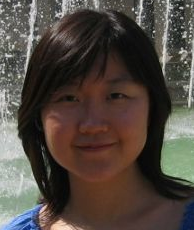(New page: Category:ECE301Spring2011Boutin Category:Problem_solving ---- = Practice Question on Computing the Fourier Transform of a Continuous-time Signal = Compute the Fourier transform o...) |
|||
| Line 15: | Line 15: | ||
---- | ---- | ||
=== Answer 1 === | === Answer 1 === | ||
| − | + | ||
| + | Guess <math>\chi(\omega)=2\pi\delta(\omega-2\pi k)\,</math> such that <math>\mathfrak{F}^{-1}=e^{jk2\pi t}</math> | ||
| + | |||
| + | check: | ||
| + | |||
| + | <math>\mathfrak{F}(2\pi\delta(\omega-2\pi k))=\frac{1}{2\pi}\int_{-\infty}^\infty2\pi\delta(\omega-2\pi k)e^{j\omega t}d\omega=e^{jk2\pi t}</math> | ||
| + | |||
| + | Therefore,<math>\chi(\omega)=2\pi\delta(\omega-2\pi k)\,</math> | ||
| + | |||
| + | --[[User:Cmcmican|Cmcmican]] 20:47, 21 February 2011 (UTC) | ||
| + | |||
| + | |||
=== Answer 2 === | === Answer 2 === | ||
Write it here. | Write it here. | ||
Revision as of 16:47, 21 February 2011
Contents
[hide]Practice Question on Computing the Fourier Transform of a Continuous-time Signal
Compute the Fourier transform of the signal
$ x(t) = \cos (2 \pi t )\ $
You will receive feedback from your instructor and TA directly on this page. Other students are welcome to comment/discuss/point out mistakes/ask questions too!
Answer 1
Guess $ \chi(\omega)=2\pi\delta(\omega-2\pi k)\, $ such that $ \mathfrak{F}^{-1}=e^{jk2\pi t} $
check:
$ \mathfrak{F}(2\pi\delta(\omega-2\pi k))=\frac{1}{2\pi}\int_{-\infty}^\infty2\pi\delta(\omega-2\pi k)e^{j\omega t}d\omega=e^{jk2\pi t} $
Therefore,$ \chi(\omega)=2\pi\delta(\omega-2\pi k)\, $
--Cmcmican 20:47, 21 February 2011 (UTC)
Answer 2
Write it here.
Answer 3
Write it here.

